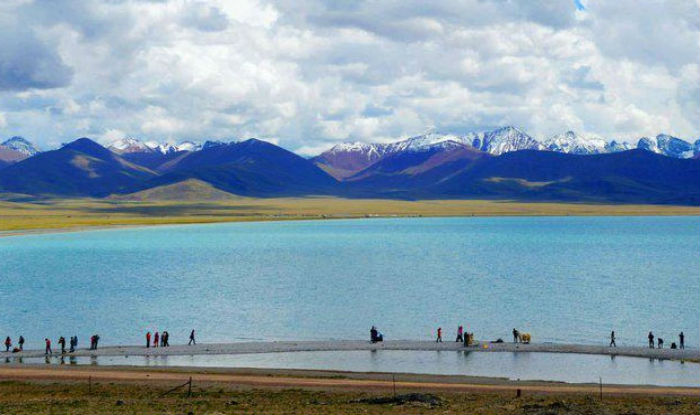New Delhi: China is looking to build a major hydropower project in Tibet’s part of the Brahmaputra River as part of the proposal for their 14th Five-Year Plan that will be implemented next year and a Chinese company has already been tasked to build a dam for the project. China’s ruling Communist Party of China (CPC) has already been formulating the country’s five-year plan, as well as long-term goals through 2035.
Yan Zhiyong, chairman of the Power Construction Corp of China, said China will “implement hydropower exploitation in the downstream of the Yarlung Zangbo River” (the Tibetan name for Brahmaputra River) and the project could serve to maintain water resources and domestic security, the Global Times reported, quoting an article on the WeChat account of the Central Committee of the Communist Youth League of China on Sunday.
“There is no parallel in history. It will be a historic opportunity for the Chinese hydropower industry,” Yan told the conference organised to celebrate the 40th anniversary of the founding of the China Society for Hydropower Engineering.
Yan said that the hydropower exploitation of the Yarlung Zangbo River downstream is more than a hydropower project. It is also meaningful for the environment, national security, living standards, energy and international cooperation.
The hydropower station could generate income of 20 billion yuan (USD three billion) annually for the Tibet Autonomous Region, he said. China has already operationalised the USD 1.5 billion Zam Hydropower Station, the largest in Tibet in 2015.
The Global Times report also mentioned speculations about China planning to build a “super hydropower station” in Medog county, where the Yarlung Zangbo Grand Canyon is located, have circulated for years. Medog is the last county in Tibet which borders Arunachal Pradesh.
The construction of the dam on Brahmaputra River is of particular concern for India and Bangladesh, the riparian states, and China has downplayed such anxieties saying it would keep their interests in mind.
This also comes at a time when China is taking forward its expansionist agenda by allegedly capturing land in India’s eastern Ladakh and Arunachal Pradesh, and a wildlife sanctuary in Bhutan. India and China ties have already been stiffened since May-June this year after 20 Indian soldiers were killed in a violent face-off in Ladakh’s Galwan Valley.
India and China established the Expert Level Mechanism (ELM) in 2006 to discuss various issues related to trans-border rivers. Under existing bilateral Memorandums of Understanding, China provides hydrological information of Brahmaputra River and Sutlej River to India during the flood seasons – between May 15 and October 15 every year for Brahmaputra River.
As a lower riparian State with considerable established user rights to the waters of the trans-border rivers, the Indian government has consistently conveyed its views and concerns to the Chinese authorities and has urged them to ensure that the interests of downstream States are not harmed by any activities in upstream areas.
Besides, the 14th Five-Year Plan (2021-2025) and National Economic and Social Development and the Long-Range Objectives Through the Year 2035 were adopted by Plenum – a key policy body of the CPC – last month.
Details of the plan were expected to be released after the formal ratification by National People’s Congress (NPC) early next year.
(With PTI inputs)
